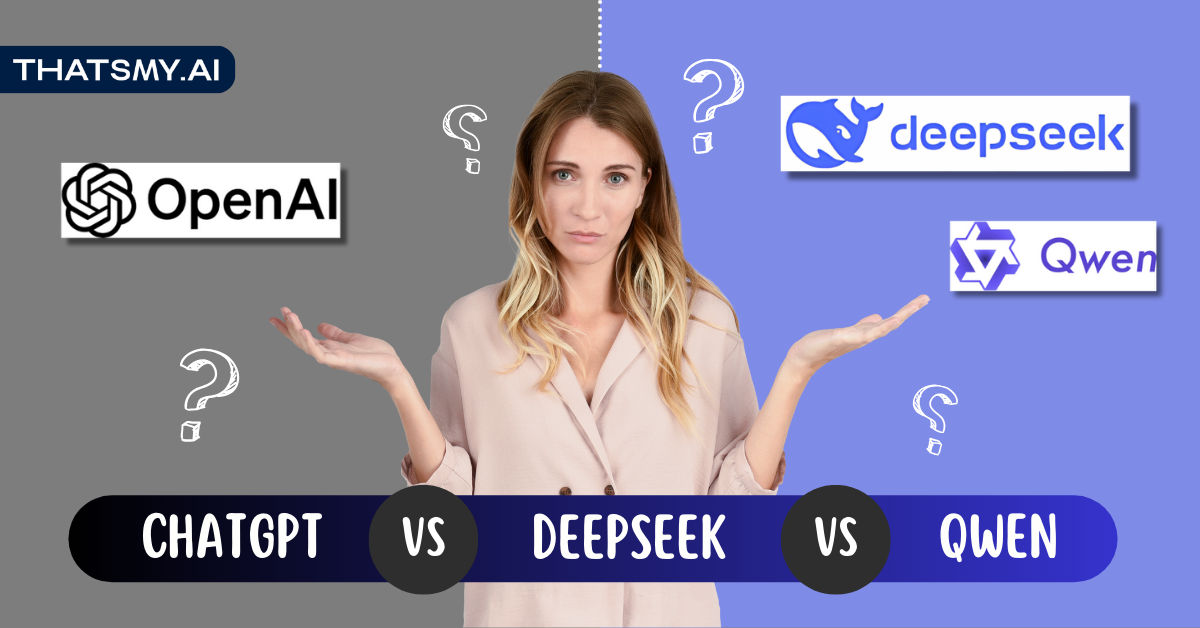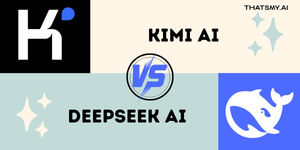Explore an in-depth comparison of three major AI models—ChatGPT, DeepSeek, and Qwen 2.5—analyzing their strengths in writing, coding, math skills, intelligence, reasoning, multimedia capabilities, and cost-efficiency. You'll discover which AI tool is best for specific tasks like content creation, programming, problem-solving, and adaptability. The blog also explores user experience, accessibility, and pricing to help you choose the right AI for your needs. Whether you're a writer, developer, or researcher, this guide will help you make an informed decision on the best AI assistant for you.

AI tools are becoming more powerful, and many people want to know which one is the best. While OpenAI’s ChatGPT has been popular for a long time, new AI tools from China—DeepSeek and Qwen—are now strong competitors. Each AI tool has its own strengths, so it’s important to understand how they compare before choosing one.
In this article, we will compare ChatGPT, DeepSeek, and Qwen based on their writing skills, math abilities, coding skills, intelligence, understanding, reasoning, multimedia abilities, learning adaptability, user experience, accessibility, and cost-efficiency. Let’s take a closer look.
|
FEATURES |
ChatGPT |
DeepSeek |
Qwen 2.5 |
|
Writing |
Great for creative and interactive writing. |
Best for technical and factual writing. |
Similar to GPT-4, strong in casual and creative writing. |
|
Math Skills |
Good at simple math, but struggles with hard problems. |
Designed for problem-solving and logic-based math. |
Excellent at solving complex math problems. |
|
Coding |
Can write simple code and explain it. |
Very good at generating and understanding code. |
Strong coding skills with deep understanding. |
|
Intelligence (IQ) |
Smart and creative, good at problem-solving. |
Great at technical and analytical thinking. |
High intelligence, especially in structured problem-solving. |
|
Understanding Context |
Remembers details and follows conversations well. |
Best in technical topics but not great in casual chats. |
Well-rounded understanding in many areas. |
|
Logical Thinking |
Good at general reasoning, but sometimes makes mistakes. |
Excellent for research and logic-based questions. |
Strong logical thinking for complex problems. |
|
Multimedia Abilities |
Mostly text-based, limited multimedia abilities. |
Focused on text understanding. |
Can handle text, images, and videos. |
|
Adaptability |
Adjusts well to different writing styles. |
Learns well for structured and technical tasks. |
Very flexible, especially in different languages and media types. |
|
User Experience |
Easy to use, widely accessible. |
Good for technical users, may be complex for beginners. |
Balanced interface with a mix of technical and user-friendly elements. |
|
Accessibility |
Available worldwide with multiple versions. |
Limited outside of China. |
Primarily available in China but expanding internationally. |
|
Cost-Efficiency |
Free and paid versions, competitive pricing. |
Open-source but may require technical expertise to deploy. |
Open-source with cost advantages, but implementation costs may vary. |
ChatGPT, created by OpenAI in the USA, is an AI that helps with natural language understanding and writing. It is great for casual conversations, brainstorming, and creative writing. It can also assist with coding and answering general questions. ChatGPT is widely used and available in multiple versions, making it one of the most accessible AI tools.
Best for: Creative copywriting, chat interactions, and brainstorming.
Limitations: Struggles with complex math and technical subjects, lacks multimedia support.
DeepSeek is a new AI model from China, built for problem-solving and logical tasks. It is especially good at math, reasoning, and technical writing. DeepSeek is designed to compete with OpenAI’s models but is also cost-efficient. It is open-source, allowing developers to fine-tune and use it for custom tasks, making it highly adaptable for professional and academic use.
Best for: Math, technical subjects, and coding.
Limitations: Not as strong for casual conversations or creative writing, lacks multimedia support.
Qwen 2.5 is an AI model from Alibaba, designed for multiple purposes. It is open-source, meaning developers can customize it. Qwen is good at writing, coding, and problem-solving. It also has multimedia abilities, allowing it to work with images and videos. Additionally, Qwen 2.5 is expanding internationally, which makes it more accessible over time.
Best for: Conversational writing, coding, and multimedia tasks.
Limitations: Not as widely used outside of China, so integration with global platforms may be limited.
For coding: DeepSeek and Qwen 2.5 are better than ChatGPT because they have stronger reasoning and coding skills.
For writing and creativity: ChatGPT is the best choice for engaging and conversational content.
For math and logic: DeepSeek and Qwen 2.5 are much better than ChatGPT at solving complex problems.
For multimedia tasks: Qwen 2.5 is the best option since it can handle text, images, and videos.
For accessibility and user-friendliness: ChatGPT is the easiest to use and widely available.
For flexibility: ChatGPT is highly adaptable, while Qwen 2.5 is great for multilingual and multimedia tasks.
For cost-efficiency: DeepSeek and Qwen 2.5, being open-source, provide cost advantages, but require technical skills to implement effectively.
Each AI model has its own strengths. If you need a general AI for chatting and writing, ChatGPT is a great option. If you work with coding or math, DeepSeek or Qwen 2.5 might be a better fit. If multimedia support and cost flexibility are important, Qwen 2.5 is an excellent option.
Before making a final choice, try each model and see which one works best for your needs. If you need AI that can work with different media types, Qwen 2.5 is the best option for the future. However, for a balance between accessibility and usability, ChatGPT remains the easiest AI to start with.
Sign up to gain AI-driven insights and tools that set you apart from the crowd. Become the leader you’re meant to be.
Start My AI Journey
ThatsMyAI
28 February 2025